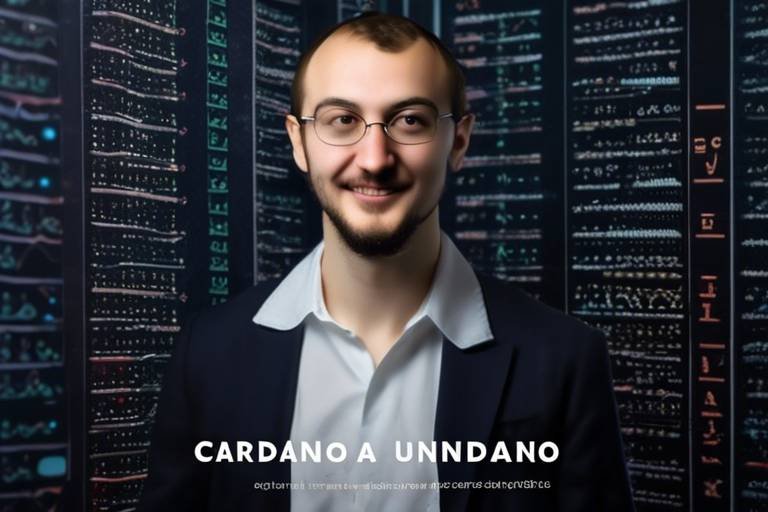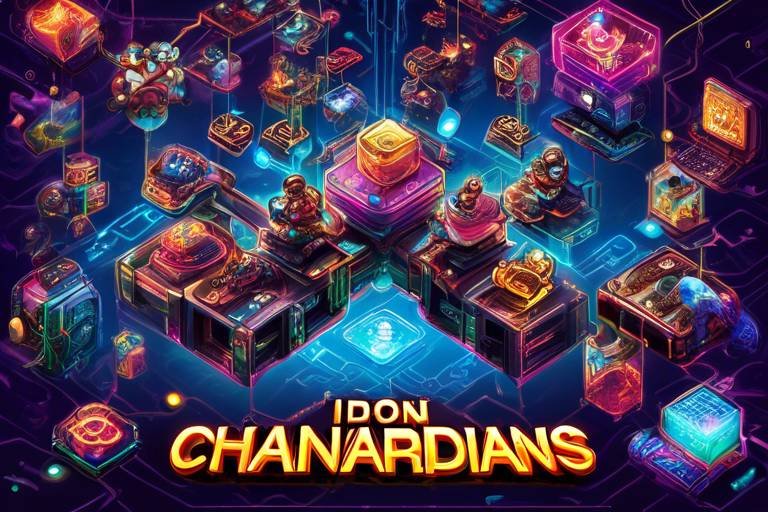Cardano - Evaluating Its Unique Proof-of-Stake Model
In the ever-evolving world of blockchain technology, Cardano stands out as a beacon of innovation, particularly with its groundbreaking proof-of-stake (PoS) consensus mechanism. Unlike traditional systems that rely on energy-intensive mining processes, Cardano's PoS model is designed to be more efficient and environmentally friendly. This article will take you on a journey through the unique features, benefits, and potential impact of Cardano's PoS model on the broader blockchain landscape. We will explore its sophisticated architecture, governance structure, and scalability, providing insights into how these elements work together to create a robust and sustainable ecosystem.
To grasp the significance of Cardano's approach, we first need to understand what proof-of-stake is and how it differs from the traditional proof-of-work systems. In a proof-of-work system, like that used by Bitcoin, miners compete to solve complex mathematical problems, consuming vast amounts of energy in the process. This not only raises concerns about environmental sustainability but also limits the scalability of such networks. In contrast, proof-of-stake allows validators to create new blocks and confirm transactions based on the number of coins they hold and are willing to "stake" as collateral. This shift not only reduces energy consumption but also enhances security, as it aligns the interests of the validators with the health of the network.
Cardano's architecture is a masterpiece of design, aimed at achieving both scalability and sustainability. It operates on a layered structure, which can be broken down into two main components: the settlement layer and the computation layer. This separation of concerns allows Cardano to process transactions efficiently while simultaneously enabling complex smart contracts and decentralized applications (dApps). By decoupling these functionalities, Cardano ensures that the network can evolve and adapt without compromising on performance or security.
The settlement layer is the backbone of the Cardano ecosystem, handling all transactions and maintaining the ledger. It ensures that every transaction is secure and efficient, acting as the first line of defense against potential threats. This layer plays a crucial role in establishing trust within the network, as it guarantees that all transactions are recorded accurately and cannot be altered retroactively. By implementing advanced cryptographic techniques, Cardano enhances the security of this layer, making it resilient against attacks and fraud.
On the other hand, the computation layer is where the magic happens. It facilitates the execution of smart contracts and allows developers to build decentralized applications that can operate seamlessly on the Cardano platform. This layer provides the flexibility needed for developers to create complex applications that can serve a variety of purposes, from financial services to supply chain management. By enabling a diverse range of applications, Cardano not only attracts developers but also fosters innovation within its ecosystem.
One of the most intriguing aspects of Cardano is its unique governance model. Unlike many blockchain projects that are often driven by a small group of developers, Cardano empowers its community to participate in the decision-making process. This decentralized approach to governance ensures that the network evolves in a way that reflects the interests of its users. By giving stakeholders a voice, Cardano promotes transparency and accountability, which are essential for building trust within the community.
At the heart of Cardano's governance is Project Catalyst, an initiative designed to fund community-driven projects. This program encourages stakeholders to propose innovative ideas that can enhance the Cardano ecosystem. By providing financial support for these initiatives, Project Catalyst fosters a culture of innovation and collaboration. It allows the community to take an active role in shaping the future of Cardano, ensuring that the network remains relevant and responsive to the needs of its users.
Cardano employs a sophisticated voting mechanism that allows stakeholders to influence decisions regarding the platform's development. By participating in governance, users can vote on proposals, allocate funds, and suggest changes to the network. This democratic approach not only strengthens community engagement but also ensures that the platform evolves in a way that aligns with the collective vision of its users. The voting process is designed to be transparent and accessible, making it easy for anyone to participate and contribute to the platform's future direction.
The benefits of Cardano's proof-of-stake model are manifold. First and foremost, it enhances security by requiring validators to stake their coins, which aligns their interests with the network's health. Additionally, the energy efficiency of PoS significantly lowers the environmental impact compared to proof-of-work systems, making Cardano a more sustainable option in the long run. Furthermore, the scalability of Cardano's architecture allows it to handle a growing number of transactions without sacrificing performance, positioning it as a strong contender in the blockchain industry.
Despite its many strengths, Cardano is not without its challenges and criticisms. Some observers point to the pace of development as a concern, arguing that it lags behind other blockchain platforms. Additionally, competition is fierce, with numerous projects vying for dominance in the space. Lastly, while Cardano's governance model is innovative, questions remain about its effectiveness in practice. As the ecosystem continues to grow and evolve, addressing these challenges will be crucial for Cardano's long-term success.
- What is Cardano's unique feature? Cardano's unique feature is its proof-of-stake consensus mechanism, which is more energy-efficient compared to traditional proof-of-work systems.
- How does Cardano ensure security? Cardano ensures security through its layered architecture and by requiring validators to stake their coins, aligning their interests with the network's health.
- What is Project Catalyst? Project Catalyst is an initiative that funds community-driven projects, encouraging innovation and participation among stakeholders.
- How can I participate in Cardano's governance? Stakeholders can participate in Cardano's governance by voting on proposals and contributing ideas for the platform's development.

Understanding Proof-of-Stake
Proof-of-stake (PoS) is a revolutionary consensus algorithm that has transformed the way blockchain networks validate transactions. Unlike the traditional proof-of-work (PoW) systems, which rely heavily on computational power and energy consumption, PoS offers a more sustainable and efficient alternative. Imagine a race where instead of running laps, participants simply need to prove they have a stake in the outcome. In PoS, the likelihood of validating a new block is proportional to the amount of cryptocurrency a participant holds and is willing to "stake" as collateral.
One of the most significant advantages of PoS is its energy efficiency. While PoW requires miners to solve complex mathematical problems, consuming vast amounts of electricity in the process, PoS eliminates the need for such intensive computations. This shift not only reduces the environmental impact but also makes the network more accessible to a broader range of participants. In fact, a study showed that PoS networks can consume up to 99% less energy compared to their PoW counterparts.
Security is another critical aspect where PoS shines. In a PoW system, the network is vulnerable to attacks if a single entity can amass enough computational power. However, in a PoS framework, an attacker would need to own a significant portion of the total supply to compromise the network, making it economically unfeasible. This mechanism creates a natural alignment of incentives, where the interests of stakers and the network are closely tied.
Furthermore, PoS contributes to decentralization. By allowing anyone with a stake to participate in the validation process, it encourages a diverse range of validators, reducing the risk of centralization that often plagues PoW systems. This inclusivity fosters a more resilient and robust network, as power is distributed among many participants rather than concentrated in the hands of a few mining pools.
To summarize, here are some key differences between Proof-of-Stake and Proof-of-Work:
| Feature | Proof-of-Work (PoW) | Proof-of-Stake (PoS) |
|---|---|---|
| Energy Consumption | High | Low |
| Security Model | Computational Power | Economic Stake |
| Decentralization | Risk of Centralization | Encourages Participation |
| Validator Selection | Randomized Mining | Stake-Based |
In conclusion, understanding the nuances of Proof-of-Stake is crucial for anyone interested in the future of blockchain technology. As we continue to explore Cardano's innovative approach, it's essential to appreciate how PoS not only enhances security and efficiency but also paves the way for a more sustainable and equitable blockchain ecosystem.

Cardano's Architecture
When we talk about , we're diving into a carefully crafted framework that prioritizes both scalability and sustainability. Think of it like a well-designed skyscraper: solid foundations, multiple levels, and a vision for the future. Cardano's architecture is built on a unique layered structure that separates the different functionalities of the network, allowing it to operate more efficiently and effectively. This separation not only enhances performance but also ensures that updates and changes can be made without disrupting the entire system.
At the core of this architecture are two primary layers: the Settlement Layer and the Computation Layer. Each layer has its own responsibilities, and together they create a robust ecosystem that can handle a variety of applications and use cases. Let’s take a closer look at these layers and how they contribute to Cardano's overall functionality.
The Settlement Layer is where the magic begins. It's responsible for handling all transactions and maintaining the ledger. Imagine it as the bank's vault, securely storing and validating every transaction that takes place within the Cardano network. This layer ensures that all transactions are processed quickly and securely, leveraging Cardano's unique proof-of-stake consensus mechanism to achieve high levels of security without the energy consumption associated with traditional proof-of-work systems.
On the other hand, the Computation Layer is where developers can unleash their creativity. This layer facilitates the deployment of smart contracts and decentralized applications (dApps). Think of it as a playground for developers, where they can build complex applications that can interact with the blockchain seamlessly. By separating the computation from the settlement, Cardano allows for greater flexibility and innovation. Developers can create and deploy their applications without worrying about the underlying transaction processing, making it easier to bring new ideas to life.
To summarize, Cardano's architecture is designed with a clear vision for the future. By separating the settlement and computation functions, it not only enhances the network's efficiency but also prepares it for scalability as demand grows. This layered approach is a game-changer, setting Cardano apart from many other blockchain platforms. As we move forward, it will be fascinating to see how this architecture evolves and adapts to new challenges in the blockchain landscape.
- What is Cardano's main advantage over other blockchains? Cardano's unique layered architecture allows for greater scalability and flexibility, making it easier to implement new features without disrupting existing services.
- How does Cardano ensure security? The Settlement Layer uses a proof-of-stake consensus mechanism, which is less energy-intensive and more secure compared to traditional proof-of-work systems.
- Can developers build on Cardano? Yes, the Computation Layer is specifically designed for developers to create smart contracts and decentralized applications, providing them with the tools they need for innovation.
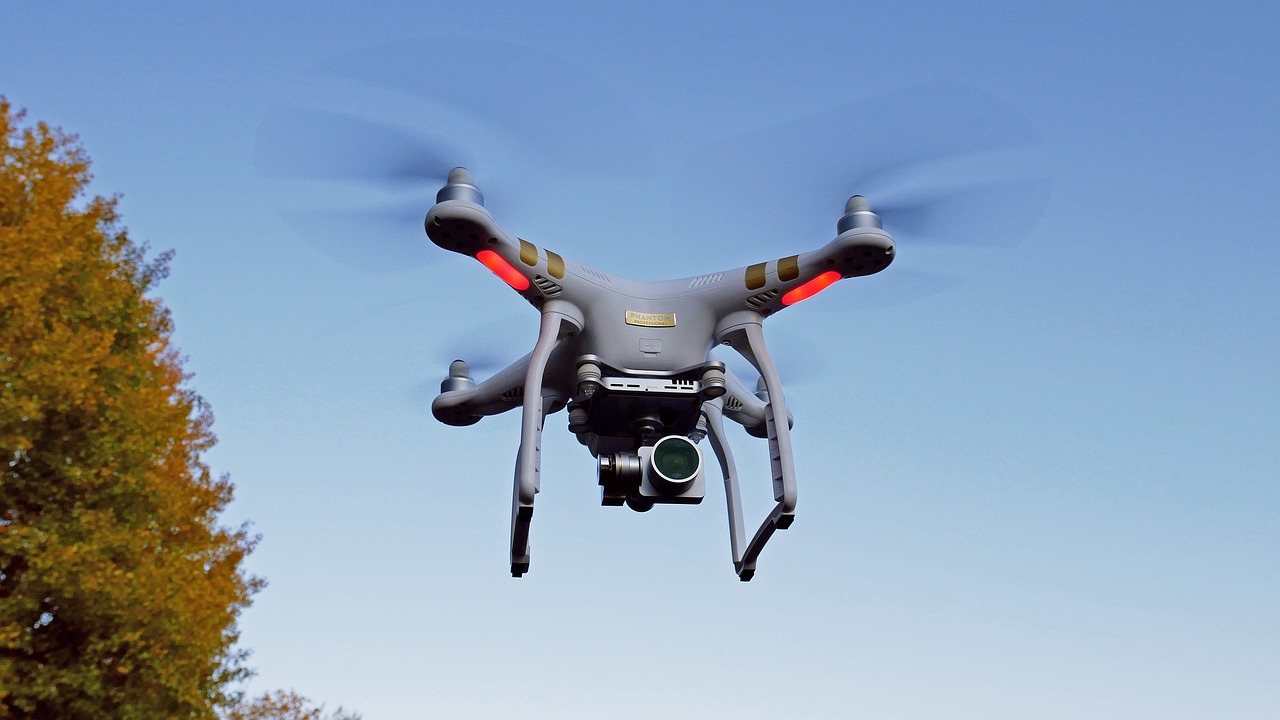
The Settlement Layer
The settlement layer is a fundamental component of Cardano's architecture, acting as the backbone for all transactions within the network. Imagine it as the bustling marketplace where all trades and exchanges happen, ensuring that everything runs smoothly and securely. This layer is responsible for maintaining the ledger and processing transactions, which is crucial for any blockchain ecosystem. By utilizing a proof-of-stake consensus mechanism, the settlement layer not only enhances security but also significantly reduces energy consumption compared to traditional proof-of-work systems.
One of the standout features of the settlement layer is its ability to handle transactions efficiently. Each transaction is validated through a process that involves stakeholders who hold ADA, Cardano's native cryptocurrency. This validation process is not only faster but also ensures that the network remains decentralized, as it relies on the collective participation of its users. In contrast to proof-of-work systems that depend heavily on computational power and energy, Cardano's approach allows for a more sustainable and eco-friendly solution.
Furthermore, the settlement layer plays a pivotal role in ensuring that transactions are secure. It employs a series of cryptographic techniques that safeguard user data and prevent fraudulent activities. This means that when you send or receive ADA, you can do so with confidence, knowing that the settlement layer is actively working to protect your assets. In addition, it maintains the integrity of the ledger by recording every transaction in a transparent manner, making it easy for users to verify their transaction history.
To provide a clearer understanding of how the settlement layer operates, let’s take a look at the following table that outlines its key functions:
| Function | Description |
|---|---|
| Transaction Processing | Handles the validation and recording of transactions on the blockchain. |
| Ledger Maintenance | Ensures that the ledger is up-to-date and reflects all transactions accurately. |
| Security Measures | Utilizes cryptographic techniques to protect user data and prevent fraud. |
| Decentralization | Relies on community participation for transaction validation, enhancing network security. |
In summary, the settlement layer of Cardano is not just a technical feature; it is a vital element that ensures the network's efficiency, security, and sustainability. By prioritizing decentralization and minimizing energy consumption, Cardano sets itself apart in the blockchain landscape, paving the way for a more responsible and scalable future. As we continue to explore Cardano's architecture, it becomes increasingly clear how integral this layer is to the overall functionality of the platform.
- What is the main purpose of the settlement layer in Cardano?
The settlement layer is responsible for processing transactions and maintaining the ledger, ensuring security and efficiency in the Cardano ecosystem. - How does Cardano's settlement layer differ from traditional systems?
Unlike traditional proof-of-work systems, Cardano's settlement layer uses a proof-of-stake mechanism, which reduces energy consumption and enhances security. - Can users verify their transactions on the Cardano network?
Yes, the settlement layer maintains a transparent ledger that allows users to easily verify their transaction history.
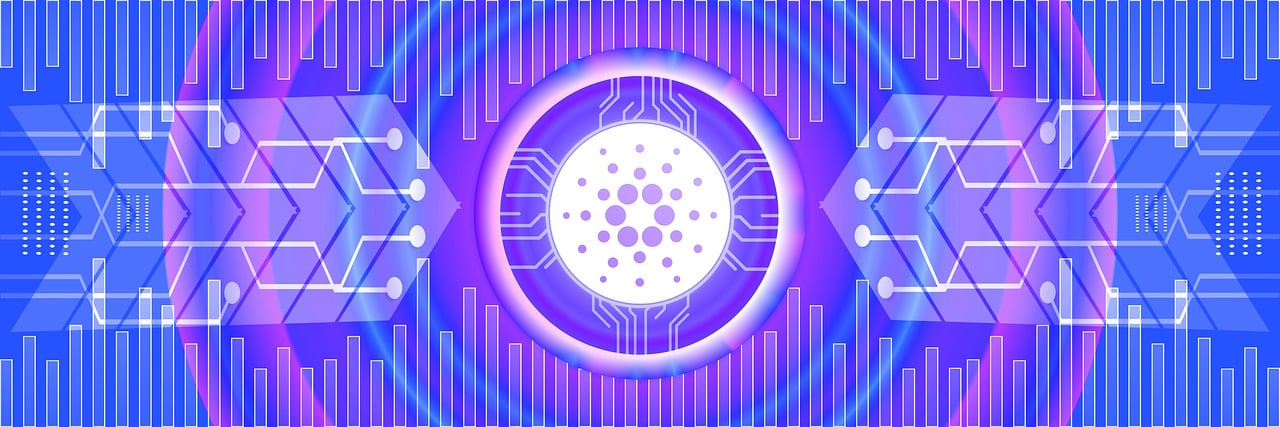
The Computation Layer
The Computation Layer of Cardano is where the magic happens when it comes to building decentralized applications (dApps) and executing smart contracts. Think of it as the bustling heart of a city, where all the action takes place, and where innovative ideas come to life. Unlike traditional blockchain systems that often intertwine transaction processing with smart contract execution, Cardano has cleverly separated these functions. This separation not only enhances the network's scalability but also allows developers to innovate without the constraints often imposed by other platforms.
One of the standout features of Cardano's Computation Layer is its support for multiple programming languages. This flexibility means that developers can choose the language they are most comfortable with, making it easier to create complex applications. For instance, Cardano employs a language called Plutus, which is designed specifically for writing smart contracts. This ensures that developers can leverage advanced programming techniques to build robust applications that can handle a variety of use cases.
Moreover, the Computation Layer is built with security at its core. By utilizing a formal verification process, Cardano ensures that smart contracts are not only functional but also free from vulnerabilities that could be exploited. This is akin to having a safety net in place, allowing developers to deploy their applications with confidence. They can focus on innovation rather than worrying about potential exploits that could jeopardize their projects.
Additionally, the Computation Layer enhances interoperability with other blockchains. This means that Cardano can communicate and interact with different blockchain networks, paving the way for a more connected and collaborative ecosystem. Imagine a world where different cities (blockchains) can share resources and information seamlessly; that's the vision Cardano is striving for.
In summary, the Computation Layer is not just a technical component of Cardano; it is a thriving ecosystem where creativity meets functionality. With its emphasis on security, flexibility, and interoperability, this layer positions Cardano as a formidable player in the blockchain arena, enabling developers to craft solutions that can transform industries. As we move forward, the potential for innovation within this layer is limitless, offering exciting possibilities for the future of decentralized applications.
- What is the main purpose of the Computation Layer in Cardano?
The Computation Layer is designed to facilitate smart contracts and decentralized applications, allowing developers to build and deploy innovative solutions. - How does Cardano ensure the security of its smart contracts?
Cardano employs formal verification processes to ensure that smart contracts are free from vulnerabilities, providing a secure environment for developers. - Can developers use any programming language on Cardano?
Cardano supports multiple programming languages, including Plutus, which is specifically designed for writing smart contracts, giving developers the flexibility they need. - What does interoperability mean in the context of Cardano?
Interoperability refers to Cardano's ability to communicate and interact with other blockchain networks, creating a more connected ecosystem.
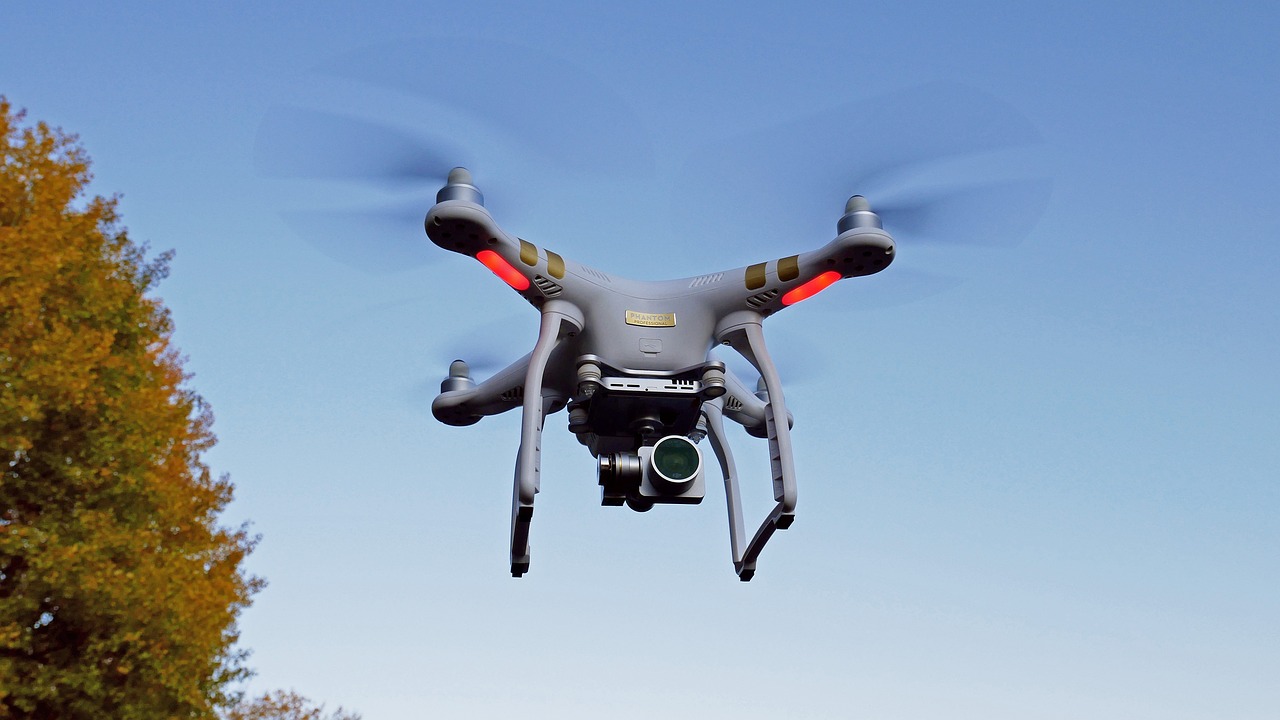
Governance in Cardano
When we talk about governance in Cardano, we're diving into a world where the community holds the reins. Unlike many blockchain projects where decisions are often made by a small group of developers or stakeholders, Cardano embraces a more democratic approach. This means that every ADA holder has a say in the future of the network. Imagine being part of a club where every member can vote on the next big project or feature; that's the essence of Cardano's governance model.
At the heart of this governance framework is the concept of decentralized decision-making. This isn't just a buzzword; it’s a fundamental principle that allows the community to propose changes, vote on them, and ultimately shape the direction of the Cardano ecosystem. The process is designed to be transparent and inclusive, ensuring that everyone has an opportunity to contribute. This is particularly important in the fast-evolving world of blockchain, where adaptability can make or break a project.
One of the key components of Cardano's governance is Project Catalyst. This initiative serves as a funding mechanism for community-driven projects. Think of it as a venture capital fund, but instead of a small group of investors deciding which projects get funding, it's the community that votes on which proposals to support. This not only fosters innovation but also encourages participation among stakeholders, creating a vibrant ecosystem where ideas can flourish.
To illustrate how Project Catalyst works, consider the following table that outlines its key features:
| Feature | Description |
|---|---|
| Community Voting | ADA holders vote on which projects should receive funding. |
| Funding Allocation | Funds are distributed based on community consensus. |
| Project Diversity | Supports a wide range of projects, from dApps to educational initiatives. |
Another essential aspect of governance in Cardano is its voting mechanisms. The platform employs a sophisticated system that allows stakeholders to influence decisions actively. This isn't just about casting a vote; it's about being part of a larger conversation regarding the network's evolution. Through these mechanisms, ADA holders can propose changes, participate in discussions, and ultimately help steer the project in a direction that aligns with their vision.
Imagine being able to suggest a feature or improvement that could enhance your experience on the platform. With Cardano's governance model, this is not only possible but encouraged. It creates a sense of ownership among community members, making them feel like they are part of something bigger. This participatory approach has the potential to build a stronger, more resilient network, as it harnesses the collective wisdom of its users.
In summary, Cardano's governance model stands out in the blockchain space for its emphasis on community involvement and decentralized decision-making. With initiatives like Project Catalyst and robust voting mechanisms, Cardano empowers its users to shape the future of the platform actively. This not only enhances the platform's adaptability but also fosters a sense of community that is crucial for long-term success.
- What is Cardano's governance model?
Cardano's governance model allows ADA holders to propose and vote on changes, ensuring decentralized decision-making. - How does Project Catalyst work?
Project Catalyst funds community-driven projects based on votes from ADA holders, fostering innovation and participation. - Can anyone participate in Cardano's governance?
Yes, any ADA holder can participate in the governance process by proposing changes and voting on projects.

Project Catalyst
Project Catalyst is a groundbreaking initiative within the Cardano ecosystem that aims to revolutionize the way community-driven projects are funded and developed. Imagine a world where the community has a direct say in the projects that shape their digital landscape; that's exactly what Project Catalyst offers. It serves as a vital bridge between innovation and community engagement, empowering stakeholders to propose, fund, and implement projects that enhance the Cardano network.
At its core, Project Catalyst embodies the principles of decentralization and collaboration. It allows Cardano users to submit proposals for projects they believe will benefit the ecosystem. These proposals can range from simple applications to complex systems that leverage Cardano's unique capabilities. The beauty of this initiative lies in its inclusivity, as anyone within the community can participate, ensuring a diverse range of ideas and perspectives.
One of the standout features of Project Catalyst is its funding mechanism. The initiative allocates a specific budget for each funding round, where community members can vote on which projects they believe should receive financial support. This voting process is not just a formality; it actively engages the community in decision-making, making them stakeholders in the success of the projects they choose to fund. Each round of funding encourages creativity and innovation, fostering an environment where groundbreaking ideas can flourish.
To illustrate the impact of Project Catalyst, let’s take a look at some key statistics:
| Funding Round | Number of Proposals | Total Funds Allocated | Successful Projects |
|---|---|---|---|
| Round 1 | 50 | $250,000 | 20 |
| Round 2 | 75 | $500,000 | 30 |
| Round 3 | 100 | $1,000,000 | 50 |
As shown in the table above, the growth of Project Catalyst is impressive, with each funding round attracting more proposals and allocating larger sums of money. This trend indicates a healthy and vibrant ecosystem where community involvement is driving innovation. The successful projects funded through Project Catalyst often tackle real-world problems and enhance the utility of the Cardano platform, making it a win-win situation for everyone involved.
Moreover, Project Catalyst not only funds projects but also nurtures them. The initiative provides resources and support to project leaders, helping them refine their ideas and execute their plans effectively. This mentorship aspect is critical, as it ensures that funded projects are not just dreams but tangible contributions to the Cardano ecosystem.
In summary, Project Catalyst is a shining example of how decentralized governance can lead to innovation and community empowerment. By allowing users to propose and vote on projects, Cardano creates an ecosystem that is not only robust but also reflective of the community's needs and aspirations. As we move forward, the success of Project Catalyst will likely play a pivotal role in determining the future direction of Cardano, making it an exciting time to be part of this dynamic blockchain landscape.
- What is Project Catalyst? Project Catalyst is Cardano's initiative to fund community-driven projects through a decentralized voting system.
- How does the funding process work? Community members submit proposals, and the community votes on which projects should receive funding during each round.
- Can anyone participate in Project Catalyst? Yes, anyone within the Cardano community can propose projects and participate in the voting process.
- What types of projects can be funded? Projects can vary widely, from simple applications to complex systems that enhance the Cardano ecosystem.
- How are successful projects supported? Project Catalyst not only funds projects but also provides mentorship and resources to help project leaders execute their ideas effectively.
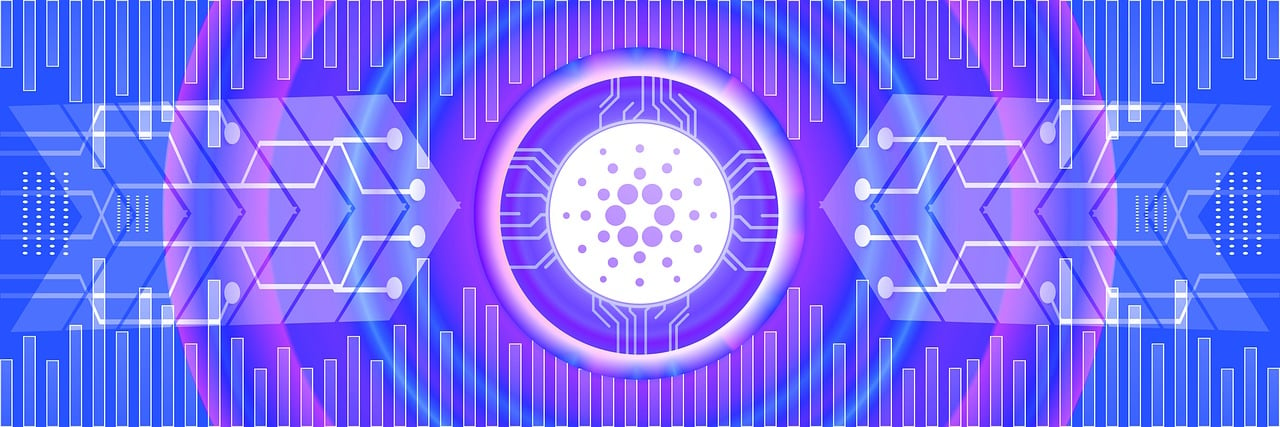
Voting Mechanisms
In the world of blockchain, governance can often feel like a maze, but Cardano has designed a voting mechanism that is not only intuitive but also empowering for its community. The beauty of Cardano's governance lies in its decentralized decision-making process, which ensures that every stakeholder has a voice. Imagine a town hall meeting where everyone gets to express their opinions and vote on the future of their community—this is essentially what Cardano has achieved within its ecosystem.
At the core of Cardano's voting mechanism is the concept of stakeholder participation. Each ADA holder can influence the direction of the platform by voting on proposals that affect the network. This is not just a theoretical concept; it’s a practical approach that brings real change. Through the use of a simple interface, stakeholders can easily review proposals, discuss their merits, and cast their votes. This process fosters a sense of community and collaboration, which is vital in the rapidly evolving blockchain landscape.
Cardano employs a unique system known as Project Catalyst, which allows community members to submit project proposals for funding. This initiative serves as a breeding ground for innovation, where ideas can flourish based on community interest and support. Stakeholders can vote on which projects they believe deserve funding, effectively putting the power in the hands of the users. The outcome of these votes directly impacts the development of the network, making it a truly democratic process.
The voting process itself is designed to be secure and transparent. Each vote is recorded on the blockchain, ensuring that the results are immutable and verifiable. This not only enhances trust among stakeholders but also provides a clear audit trail for future reference. In this way, Cardano's governance model stands in stark contrast to traditional systems where decisions are often made behind closed doors, away from the eyes of the public.
Moreover, Cardano's voting mechanism is continuously evolving. The platform is exploring the integration of more sophisticated voting options, such as quadratic voting, which allows for more nuanced expressions of preference among voters. This innovation could further enhance the democratic nature of decision-making within the ecosystem.
In summary, Cardano's voting mechanisms are a testament to its commitment to decentralization and community engagement. By empowering stakeholders to participate in governance actively, Cardano is not just building a blockchain; it's building a community-driven ecosystem that thrives on collaboration and innovation. The future of Cardano will undoubtedly be shaped by the voices of its users, making it an exciting space to watch as it continues to grow and evolve.
- What is Cardano's voting mechanism?
Cardano's voting mechanism allows ADA holders to participate in decision-making processes by voting on proposals that affect the network.
- How does Project Catalyst work?
Project Catalyst is an initiative that funds community-driven projects based on stakeholder votes, fostering innovation and collaboration.
- Is the voting process secure?
Yes, the voting process is recorded on the blockchain, ensuring transparency and immutability of the results.
- Can anyone participate in voting?
Any ADA holder can participate in the voting process, making it accessible to the community.
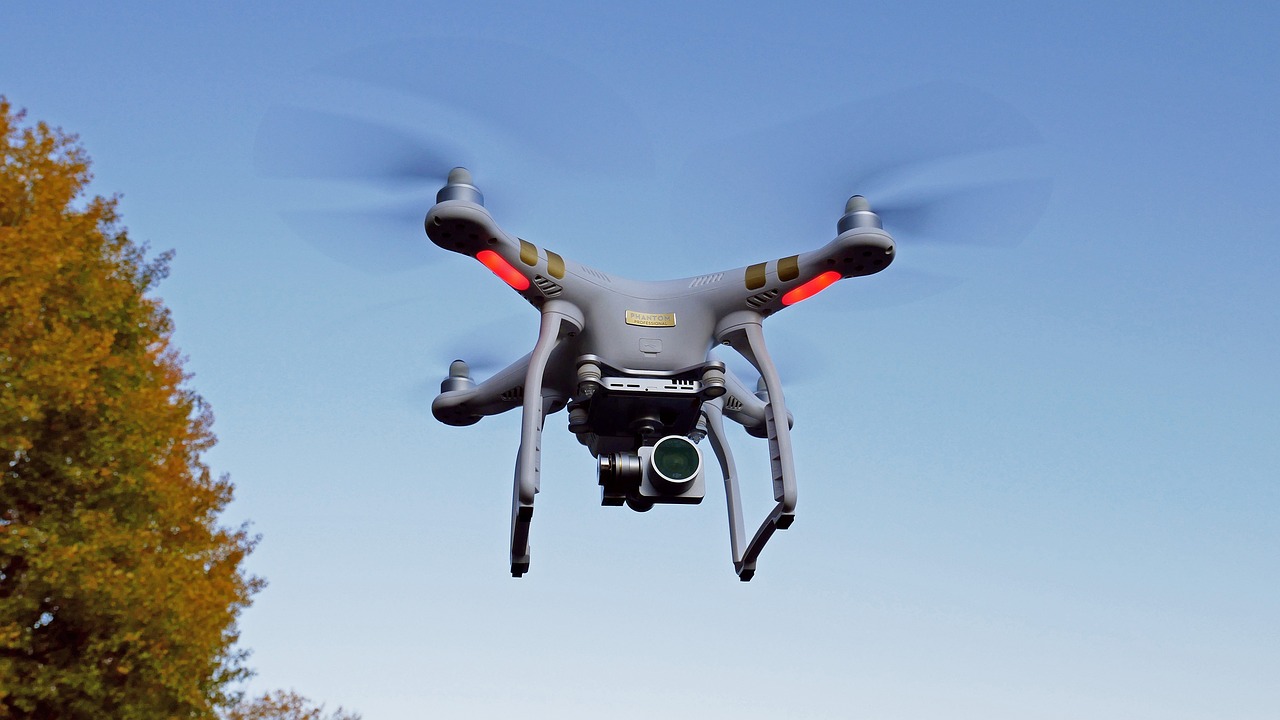
Benefits of Cardano's PoS Model
Cardano's proof-of-stake (PoS) model is like a breath of fresh air in the blockchain ecosystem. Unlike traditional proof-of-work systems that require massive computational power and energy consumption, Cardano's PoS model offers several compelling advantages that not only enhance security but also promote sustainability. Imagine a world where blockchain technology is both efficient and environmentally friendly—Cardano is making that a reality!
One of the standout features of Cardano's PoS model is its enhanced security. In PoS, validators are chosen to create new blocks based on the number of coins they hold and are willing to "stake" as collateral. This means that the more you stake, the higher your chances of being selected to validate transactions. In this way, the network incentivizes honest behavior. If a validator tries to cheat the system, they risk losing their staked coins. This creates a strong deterrent against malicious activities, ensuring that the network remains secure and reliable.
Another significant benefit of Cardano's PoS model is its lower energy consumption. As we become increasingly aware of climate change and the environmental impact of technology, Cardano's energy-efficient approach is a breath of fresh air. Traditional proof-of-work systems consume enormous amounts of electricity, often equivalent to the energy usage of entire countries. In contrast, Cardano's PoS mechanism requires only a fraction of that energy. This efficiency not only reduces the ecological footprint of blockchain technology but also makes Cardano an attractive option for environmentally conscious developers and users.
Moreover, Cardano's PoS model enhances scalability. As the demand for blockchain applications grows, scalability becomes a crucial factor. Cardano's architecture allows for a higher transaction throughput compared to PoW systems. This means that as more users join the network, Cardano can handle increased traffic without compromising performance. The ability to scale efficiently positions Cardano as a strong contender in the competitive blockchain landscape.
To summarize the benefits, here's a quick comparison:
| Feature | Proof-of-Stake (PoS) | Proof-of-Work (PoW) |
|---|---|---|
| Energy Consumption | Low | High |
| Security | High | Moderate |
| Scalability | High | Limited |
In addition to these technical advantages, Cardano's PoS model fosters a vibrant community. By allowing users to participate in the staking process, it encourages a sense of ownership and involvement. Stakeholders are not just passive observers; they are active participants in the network's governance and evolution. This community-driven approach ensures that Cardano remains adaptable to the needs and desires of its users, paving the way for continuous innovation.
As we look to the future, Cardano's PoS model stands as a beacon of what blockchain technology can achieve. With its unique blend of security, efficiency, and community engagement, it is poised to make a significant impact on the blockchain landscape. So, if you're considering diving into the world of cryptocurrencies, Cardano's proof-of-stake model might just be the perfect entry point.
- What is proof-of-stake? Proof-of-stake is a consensus algorithm that allows blockchain networks to validate transactions based on the number of coins held and staked by validators.
- How does Cardano's PoS model enhance security? Validators risk losing their staked coins if they act maliciously, creating a strong incentive for honest behavior.
- Why is Cardano's PoS model more energy-efficient? Unlike proof-of-work systems, which require extensive computational power, PoS relies on staking, significantly reducing energy consumption.
- Can Cardano scale effectively? Yes, Cardano's architecture is designed for high transaction throughput, making it scalable as user demand increases.

Challenges and Criticisms
While Cardano has garnered significant attention and praise for its innovative proof-of-stake model, it is not without its challenges and criticisms. One of the most frequently mentioned concerns is the pace of its development. Unlike other blockchain platforms that appear to roll out updates and features at breakneck speed, Cardano adopts a more methodical approach. This deliberate pace, while ensuring thorough testing and security, can lead to frustration among users and developers who are eager for new functionalities and applications. It’s a bit like watching a pot boil; you know it will eventually bubble over, but the wait can feel interminable.
Another area of concern is the competition within the blockchain space. With platforms like Ethereum, Binance Smart Chain, and Solana making headlines for their rapid advancements and thriving ecosystems, Cardano must continuously innovate to maintain its relevance. The challenge here lies in not just keeping pace but also in differentiating itself in a crowded market. It’s akin to being in a race where every competitor is sprinting forward, and you must find a way to not only catch up but also stand out. This competitive pressure could lead to a rushed development cycle, potentially compromising the quality that Cardano prides itself on.
Furthermore, the effectiveness of Cardano's governance model has come under scrutiny. While the idea of decentralized decision-making is appealing, critics argue that it can lead to inefficiencies and a lack of clear direction. How can a community of diverse stakeholders reach consensus on critical issues without getting bogged down in endless debates? This question is particularly pertinent when it comes to funding and prioritizing projects within the ecosystem. The Project Catalyst initiative, which aims to fund community-driven projects, has been a step in the right direction, but the actual implementation and decision-making process can feel cumbersome and slow.
Moreover, there are concerns regarding security and the potential for vulnerabilities in the network. Although Cardano’s proof-of-stake model is designed to be secure, the emergence of new threats in the blockchain space means that constant vigilance is necessary. The community must stay proactive in identifying and addressing potential security issues, or risk undermining the trust that users have in the platform.
In summary, while Cardano's proof-of-stake model offers exciting possibilities, it is essential to acknowledge and address the challenges it faces. The balance between innovation and thoroughness, the pressure of competition, the complexities of governance, and the need for robust security measures are all critical factors that will shape the future of Cardano. As the blockchain landscape continues to evolve, how Cardano navigates these challenges will be pivotal in determining its success.
- What are the main criticisms of Cardano? Cardano faces challenges related to its slow development pace, competition with other blockchain platforms, and questions about the effectiveness of its governance model.
- How does Cardano's governance model work? Cardano employs a decentralized governance model that allows community members to participate in decision-making processes regarding the development of the network.
- Is Cardano secure? While Cardano's proof-of-stake model is designed with security in mind, ongoing vigilance is required to address emerging threats in the blockchain space.
Frequently Asked Questions
-
What is Cardano's proof-of-stake model?
Cardano's proof-of-stake (PoS) model is a consensus algorithm that allows the network to validate transactions without the energy-intensive requirements of traditional proof-of-work systems. Instead of miners competing to solve complex puzzles, Cardano uses a system where validators are chosen to create new blocks based on the amount of cryptocurrency they hold and are willing to "stake" as collateral.
-
How does Cardano ensure security in its network?
Cardano enhances security through its layered architecture, which separates the settlement and computation layers. The settlement layer handles transactions and maintains the ledger, while the computation layer supports smart contracts and decentralized applications. This separation allows for better security measures and efficiency, making the network less susceptible to attacks.
-
What are the benefits of using Cardano's PoS model?
The benefits of Cardano's PoS model include significantly lower energy consumption compared to proof-of-work systems, enhanced security features, and improved scalability. This means that not only is it more environmentally friendly, but it also allows the network to handle a larger volume of transactions without compromising performance.
-
How does governance work in Cardano?
Cardano employs a unique governance model that encourages community participation in decision-making processes. Through initiatives like Project Catalyst, stakeholders can propose and vote on projects that they believe will benefit the ecosystem. This decentralized approach ensures that the development of the network reflects the interests and needs of its users.
-
What is Project Catalyst?
Project Catalyst is Cardano's initiative designed to fund community-driven projects. It allows users to submit ideas and proposals for funding, which are then voted on by the community. This program not only fosters innovation but also empowers users to take an active role in shaping the future of the Cardano ecosystem.
-
What challenges does Cardano face?
Despite its innovative features, Cardano faces challenges such as the pace of its development, competition from other blockchain platforms, and criticisms regarding the effectiveness of its governance model. As the blockchain landscape evolves, Cardano must address these concerns to maintain its position as a leading platform.
-
How does Cardano's architecture contribute to its scalability?
Cardano's architecture is designed with scalability in mind, featuring a dual-layer system that separates transaction processing from smart contract execution. This structure allows the network to handle a higher number of transactions simultaneously, making it more efficient and capable of supporting a growing user base and application ecosystem.

